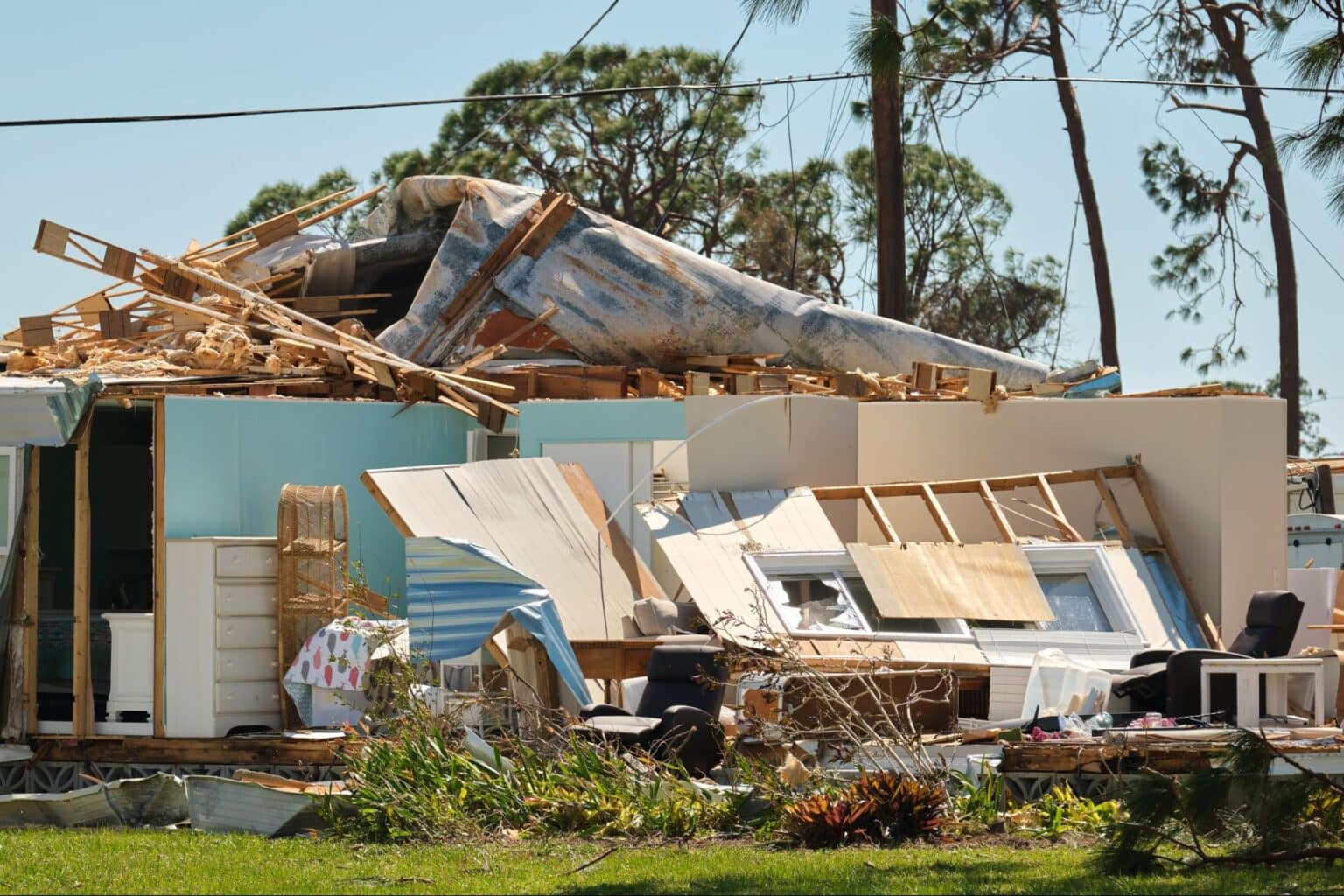Buying your first home is an exciting milestone that comes with important responsibilities—one of which is securing the right homeowners insurance. For many first-time buyers in Southern Indiana, Illinois, and Kentucky, choosing a policy can seem overwhelming.
This guide explains the basics of homeowners insurance, outlines policy types and key factors to consider, and offers practical tips and advice—all to help you protect your investment with confidence.
Understanding the Basics of Homeowners Insurance
Homeowners insurance protects your home, personal belongings, and can provide liability coverage in certain situations. Although insurance terminology may seem intimidating, breaking it down into its core elements can clarify how it benefits you.
Key Coverage Types
Most standard homeowners insurance policies include four primary coverages:
- Dwelling Coverage: Protects the physical structure of your home in case of damage from events like fire or windstorms.
- Personal Property Coverage: Covers the loss or damage of personal belongings such as furniture and electronics.
- Liability Protection: Provides financial protection in the event someone is injured on your property and holds you responsible.
- Additional Living Expenses (ALE): Pays for temporary housing and other living costs if your home becomes uninhabitable due to a covered event.
Essential Insurance Terms
- Premium: The amount you pay regularly for your policy.
- Deductible: The portion you must pay out of pocket before insurance covers the rest.
- Policy Limits: The maximum amount an insurer will pay for a claim.
- Exclusions: Specific events or damages not covered by your policy, such as flood damage, which often requires separate coverage.
By understanding these basics, you can better appreciate how homeowners insurance works to protect your investment and give you peace of mind.
Types of Homeowners Insurance Policies
There is no one-size-fits-all approach to homeowners insurance. Policies vary based on home type, location, and individual needs. Most policies fall under standardized forms known as HO-1 through HO-8.
Overview of Common Policy Forms
- HO-1 (Basic Form): Provides limited coverage for a few named perils and is rarely used.
- HO-2 (Broad Form): Covers a wider range of specified risks than HO-1.
- HO-3 (Special Form): The most common policy for single-family homes; it offers open-peril coverage for the dwelling and named-peril coverage for personal property.
- HO-4: Is a renter’s insurance policy.
- HO-5 (Comprehensive Form): Offers broader protection for both structure and possessions under an open-perils basis, ideal for higher-value homes. For more details, see Bankrate’s guide to HO-5 coverage.
- HO-6 (Condominium Form): Designed for condo owners, covering interior property upgrades and personal property.
- HO-7 and HO-8: Tailored for mobile homes or older, historic properties requiring modified coverage considerations.
Customizing Your Policy
Standard policies serve as a foundation. However, you may need to adjust your coverage based on factors like high-value items or unique home features. Consider endorsements or add-ons for specific risks (such as flood or earthquake coverage) that standard policies exclude.
Key Factors to Consider When Choosing Homeowners Insurance
Choosing the right policy means evaluating both your home’s value and the risks associated with its location. Key factors include:
Assessing Home and Belongings Value
- Dwelling Coverage: Ensure the coverage amount reflects the true cost of rebuilding your home.
- Personal Property Coverage: Take an inventory of possessions, ensuring coverage limits are sufficient for replacement if needed.
Evaluating Location-Based Risks
Homes in Southern Indiana, Illinois, and Kentucky face unique challenges:
- Severe Weather: Areas prone to tornadoes, windstorms, or hail may require policies with specific endorsements.
- Flood Risk: Since standard policies typically exclude flood damage, check if a separate policy is needed.
- Local Crime: Higher crime rates might necessitate stronger personal property coverage.
Replacement Cost vs. Actual Cash Value
Understand whether your policy offers:
- Replacement Cost Coverage: Replaces damaged items with new ones of similar quality.
- Actual Cash Value: Pays the depreciated value, which could result in lower payouts.
Customizing your coverage to fit these factors ensures you’re neither underinsured nor paying for unnecessary extras.
Steps to Purchase the Right Homeowners Insurance
A structured approach simplifies the process:
1. Research and Compare Providers
Begin by thoroughly researching and comparing insurance providers. When evaluating companies, prioritize those with strong financial ratings and positive customer reviews, ensuring their reliability and stability. It’s also crucial to choose providers offering flexibility in their policy options and endorsements, allowing you to tailor coverage to your specific needs.
2. Ask the Right Questions
When discussing policies with an insurer or independent agent, be sure to ask the right questions to fully understand your potential coverage. These crucial questions include inquiring about the specific perils covered and any exclusions within the policy.
Additionally, ensure you understand the deductibles, policy limits, and available optional endorsements.
Finally, don’t forget to ask about potential discounts that might be available, such as those for implementing safety measures in your home or for bundling your homeowners insurance with other policies.
3. Gather Necessary Documentation
Prepare details about your home (construction type, size, and age) and any loan or appraisal documents. Accurate information ensures you receive adequate dwelling coverage and appropriate personal property limits.
4. Finalize Your Policy
Confirm that the policy adequately addresses both structural and personal property coverage. Pay close attention to whether it covers specific regional risks, such as weather-related damage that may be prevalent in your area. Lastly, ensure that the policy establishes reasonable deductibles that effectively balance your desired level of coverage with your budget and cost considerations.
Ensuring every detail aligns with your needs prevents surprises when the time comes to file a claim.
Practical Tips to Save Money on Homeowners Insurance
Effective strategies can lower your premiums without sacrificing essential coverage:
Bundle Your Policies
Combining home and auto or other types of insurance with one provider may lead to significant discounts. Always compare bundled policies to standalone options to determine real savings.
Leverage Safety Discounts
Invest in home safety improvements such as security systems, smoke detectors, and storm-resistant features. These enhancements reduce risk and may lower your premium.
Maintain a Good Credit Score
A strong credit score often results in lower insurance rates. Consistent, on-time payments and managing debts wisely can positively influence your premium.
Adjust Your Deductible Wisely
A higher deductible can reduce your premium, but only choose one that you can afford in the event of a claim. Balance potential savings with your ability to meet the deductible if needed.
Regularly Review Your Policy
As your home evolves—through upgrades, renovations, or changes in personal belongings—review your policy to ensure it still meets your needs. Updating your coverage promptly can prevent paying for unnecessary or outdated protection.
Common Mistakes First-Time Buyers Should Avoid
New homeowners often make errors that lead to insufficient coverage or unnecessary expenses. Here are some pitfalls to steer clear of:
Overemphasizing Price
Choosing the lowest premium might seem attractive, but it could mean sacrificing essential protection. Focus on value and comprehensive coverage that suits your situation.
Ignoring Policy Exclusions
Always read the fine print. Missing exclusions like flood or earthquake damage can leave you unprotected during a critical event. Consider additional endorsements if necessary.
Underestimating Personal Property Value
Failure to inventory and properly value your belongings can result in inadequate personal property coverage. Conduct a thorough review of your possessions and adjust your policy limits as needed.
Failing to Update Your Policy
Major changes to your home should trigger a policy review. Whether you’ve completed renovations or acquired new valuables, keeping your insurer informed ensures continuous, adequate coverage.
Skipping Professional Guidance
Don’t rely solely on online comparisons or advice from non-experts. Independent insurance agents provide insight tailored to your circumstances, helping you avoid costly mistakes.
Filing a Homeowners Insurance Claim
In the event that you experience property damage or loss, understanding the claims process is essential. Begin by thoroughly documenting the damage using photos, detailed notes, and receipts. Contact your insurer promptly to report the incident and provide all pertinent information. Clear communication helps expedite claim processing. Independent agents at Torian Insurance are available to guide you through each step, ensuring that claims are handled fairly and efficiently, reducing stress during challenging times.
Future Trends and Considerations for Homeowners Insurance
As market trends and climate patterns evolve, staying informed about future risks is increasingly important. Emerging home technologies, changing weather conditions, and economic factors can influence insurance needs over time. Periodic policy reviews and consulting with independent experts can help ensure your coverage aligns with both current and future risks, giving you lasting protection and peace of mind.
Your Next Steps to Home Insurance Confidence
For first-time homebuyers, navigating homeowners insurance can seem daunting. However, understanding key coverages and customizing your policy to reflect your home’s value, local risks, and personal needs ensures that you make an informed decision. A well-chosen policy not only protects your physical home but also provides financial security and peace of mind.
Remember to consider various policy forms—such as HO-1 (Basic Form), HO-3 (Special Form), HO-5 (Comprehensive Form), and HO-6 (Condominium Form)—and options like replacement cost coverage. Homeowners in Southern Indiana, Illinois, and Kentucky face unique risks that can influence policy features, so choosing coverage suited to these region-specific concerns is crucial.
When navigating the complexities of homeowners insurance as a first-time buyer, consider the advantages of Torian Insurance. As a locally-focused agency with deep roots in these areas, they provide expert guidance on regional risks. Torian excels at tailoring coverage to your specific needs and offers personalized support to make securing the right policy a reassuring and straightforward experience.
Contact the Torian Insurance team today to discover custom insurance solutions tailored for your unique needs, and take the first step toward secure, worry-free homeownership.



